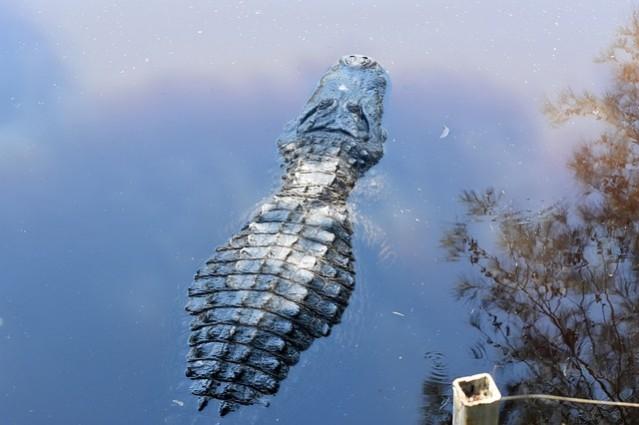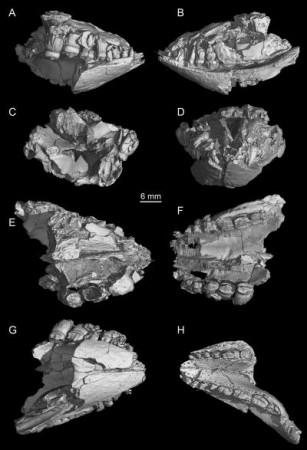
Relegating the old notion that crocodiles and alligators have a simple evolutionary past, a new study offers a different story saying these co-called living fossils came from a variety of surroundings since the early Jurassic Period. Several of these species experienced a host of ecosystems over time, including land, estuarine, freshwater and marine, they said.
The new study goes contrary to the previously held notion that crocodiles and alligators started with a land-based ancestor some 200 million years ago before moving to fresh water, where they became semi-aquatic ambush predators as they are today.
The new study, published in the journal Scientific Reports, stated that the volutionary graph of crocodiles was not confined to one ecosystem but varied from land to freshwater to sea or moving to land from freshwater as well.
Christopher Brochu from the University of Iowa says, "Crocodiles are not living fossils. Transitions between land, sea, and freshwater were more frequent than we thought, and the transitions were not always land-to-freshwater or freshwater-to-marine."
Brochu and his team from Stony Brook University have put together crocodile and alligator ancestry and analyzed a large family tree depicting the evolution of both living and extinct crocodylomorphs. The team has noted several divergence points in the ancestral habitat that made these species move from one ecosystem to another.
The complex evolutionary history was merely due to their habitat, but of form, said researchers in their study, citing the example that those living at sea had paddles and not limbs, while those on land often had hoof-like claws and long legs. Hence these organs have not evolved from ancestors that looked like modern crocodiles, as has long been assumed, said researchers.

Earlier, in a 2013 study, researchers had revealed how the crocodiles evolved and survived in a dinosaur dominated world with extremely diverse evolution -- some built for running around like dogs on land while others adapted to ocean life, imitating the feeding behaviour of killer whales.
This paper, published in the journal Proceedings of the Royal Society showcased the jaws of ancient crocodiles, whilst living alongside the dinosaurs 235 to 65 million years ago. The joint study, conducted by researchers from the University of Bristol and Duke University, examined anatomical variation in the morphology and biomechanics of the lower jaws in over 100 ancient crocodiles.
Tom Stubbs, who led the research at the University of Bristol, said: "The ancestors of today's crocodiles have a fascinating history that is relatively unknown compared to their dinosaur counterparts. They were very different creatures to the ones we are familiar with today, much more diverse and, as this research shows, their ability to adapt was quite remarkable.
"Their evolution and anatomical variation during the Mesozoic Era was exceptional. They evolved lifestyles and feeding ecologies unlike anything seen today," said Tom Stubbs.
Following the end-Triassic extinction, ancient crocodiles invaded the Jurassic seas and evolved jaws to capture agile prey, such as fish. The variation peaked again in the Cretaceous, as they adapted to different ecologies and terrestrial environments, alongside the dinosaurs, revealed this study.

















